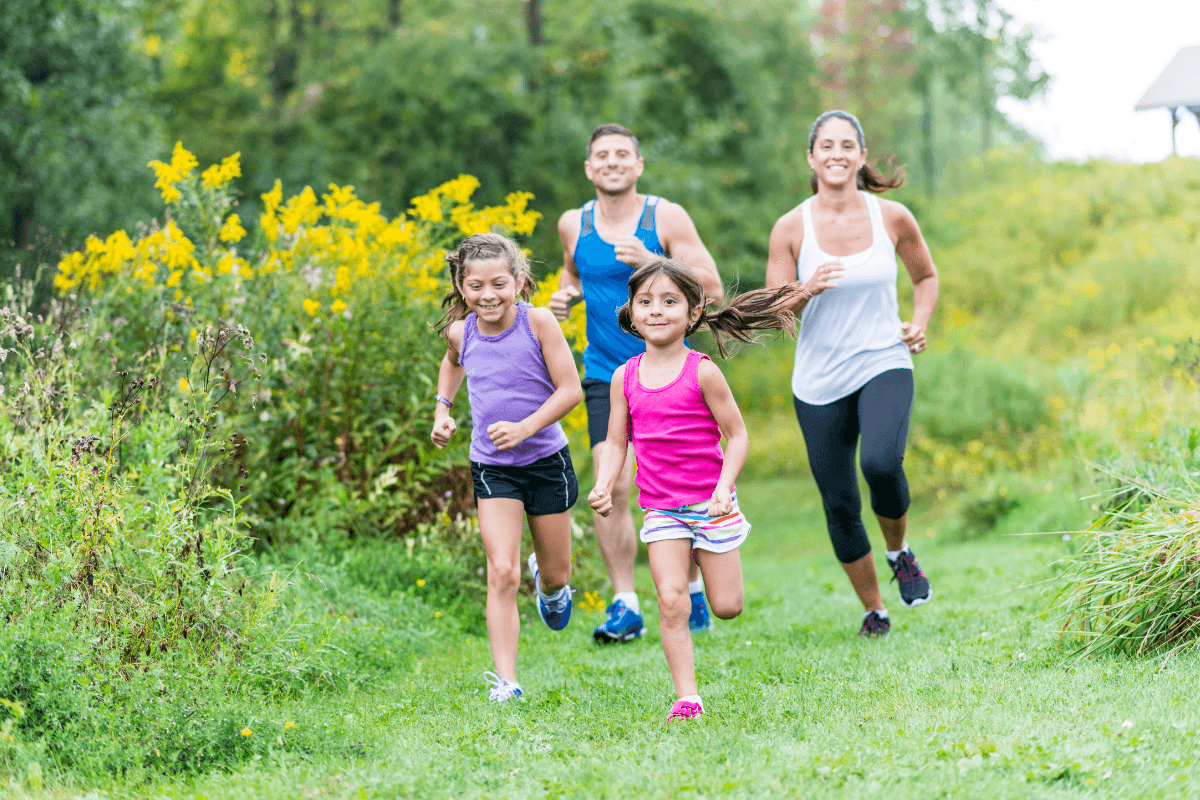Use Family Health and Fitness Day to kickstart simple, lasting habits. A clear plan, age-appropriate activities, and modest goals can make movement feel doable. Build around what your family already likes, then add small upgrades.
Key Takeaways
- Start small goals: ten-minute bouts
- Plan inclusive, low-risk activities
- Fuel, hydrate, and rest well
- Use community events for momentum
- Track routines, not just weight
Planning Your Family Health and Fitness Day
Begin with practical constraints. Choose a time window, a safe location, and a backup indoor option. Confirm any medical considerations, including mobility limits or blood glucose monitoring needs. Assign roles so everyone participates, including timekeeper, warm-up lead, and snack prep.
Define one outcome for the day, like a 30-minute walk plus a short stretch routine. Create a simple loop route and add optional stations—balance holds, stair climbs, or lawn games. Keep equipment minimal. A ball, resistance band, or jump rope covers many options. End with a quick recap so each person names one win and one improvement for next time.
Safe Movement for All Ages
Match intensity to current fitness and health status. Adults generally benefit from moderate aerobic activity most days, while children thrive on frequent, playful movement. According to the CDC activity guidelines, adults may aim for 150 minutes of moderate aerobic work weekly plus muscle-strengthening twice weekly. The CDC guidance for children emphasizes 60 minutes daily, with muscle and bone-loading play several days per week.
Start with a gradual warm-up, then build short intervals. Keep a conversational pace for most of the session and use talk tests to control intensity. Include one block of family fitness activities that requires minimal skill, like brisk walking, park circuits, or yard games. If someone lives with diabetes, bring glucose sources and check levels as recommended. For practical routines that consider diabetes management, see Exercise Tips to Manage Diabetes for warm-up options and pacing ideas. As an added safety measure during outdoor sessions, review Glucagon Injection Kit use so the group knows where it is and when it helps.
Age-Specific Examples
Younger kids do best with games that change often: tag variants, animal walks, and short obstacle courses. Teens may prefer skill-based options like cycling, dance, or bodyweight circuits. Adults can rotate brisk walking with simple resistance moves. Older adults might focus on balance, posture, and light strength training. Mix choices so abilities overlap and everyone participates at the same time. Keep effort moderate for most minutes, then add brief challenges, like a one-minute hill or a 30-second speed walk, to build confidence without overexertion.
Food, Sleep, and Recovery
Plan snacks that are easy to digest and support energy. A balance of carbohydrates and protein often works well, like yogurt with fruit or whole-grain crackers with nut butter. Hydration matters before, during, and after activity; water suits most sessions, while longer or hot-weather workouts may warrant electrolytes. For a deeper look at meal patterns that support glucose balance, see Best Diet for Insulin Resistance for food lists and timing tips. When time is tight, consider a portion-controlled shake; for diabetes-friendly meal replacements, see Glucerna 1.2 Cal Vanilla as an example to discuss with a clinician.
Recovery habits sustain progress. Build a wind-down routine, light stretching, and predictable bedtimes. Sleep supports muscle repair and metabolic health; the NIH sleep guidance outlines how sufficient rest can benefit learning, mood, and cardio-metabolic risk. Keep a simple log of water intake, meals, and perceived energy. One sentence per day is enough to spot useful trends for family nutrition and fitness decisions.
Community and Calendar Anchors
Use community events to stay motivated and connected. Many parks departments host free walks, fun runs, or movement classes throughout the year. Align your routine with national fitness day celebrations at schools or recreation centers to find new classes and mentors. To explore multigenerational programs and inclusive options, see National Senior Health and Fitness Day for examples of safe, age-friendly activities. If your family also participates in diabetes awareness efforts, World Diabetes Day 2025 offers education themes that pair well with walking campaigns.
Mark seasonal observances on your shared calendar. Late spring often features regional family health day events, while many communities run fitness fairs in early fall. Check city newsletters for community fitness events supported by local clinics or parks. Note any September health observances to weave in education, screenings, or friendly challenges. Local organizers may brand these as family wellness day programs or parks and recreation initiatives with beginners in mind. Bring a picnic and use shaded spaces for movement, rest, and social connection.
Build Momentum With a Family Fitness Challenge
Consistency grows when goals feel visible and shared. Set a simple family fitness challenge for four weeks—like 20 active minutes per day or a step-count streak. Choose a start date, agree on a prize that celebrates effort, and track progress publicly on the fridge. Keep rules flexible for sick days or travel. If weight management is also a family priority, see Weight Loss Tips That Work for habit-based strategies you can adapt without extreme changes.
Motivation improves with recognition and variety. Rotate who chooses the weekly route or playlist. Add social support by inviting neighbors to a weekend walk. If someone is starting new medications that may affect energy or appetite, pair expectations with gentle pacing. Brief reflections after each session help everyone note wins, concerns, and next steps without judgment.
Tools, Tracking, and Inclusivity
Keep equipment simple and accessible. A shared checklist and a timer may be enough. Use step counters or phone apps for basic tracking, then review totals weekly. Celebrate streaks and improvements in endurance, balance, or mood. Try one new circuit each month to expand family workout ideas. For broader reading on lifestyle pillars beyond exercise, browse the General Health library for sleep, stress, and nutrition insights that reinforce active routines.
Health needs differ, and inclusivity keeps everyone engaged. If someone uses GLP-1 therapy, low-intensity days may help handle fatigue. For practical context on exercise tolerance and cardiometabolic benefits, see Mounjaro Heart Benefits to understand how activity complements treatment. If tiredness becomes a barrier, read Zepbound and Fatigue for pacing ideas that balance rest and movement. Tip: Put a small kit—water, sun protection, and a quick sugar source—in the same place every time so no one forgets essentials.
Recap
Plan a simple, inclusive event, move at a safe pace, and refuel well. Use community anchors to maintain momentum, then track small wins week by week. These steps build durable habits that support physical and mental health across the family.
This content is for informational purposes only and is not a substitute for professional medical advice.


